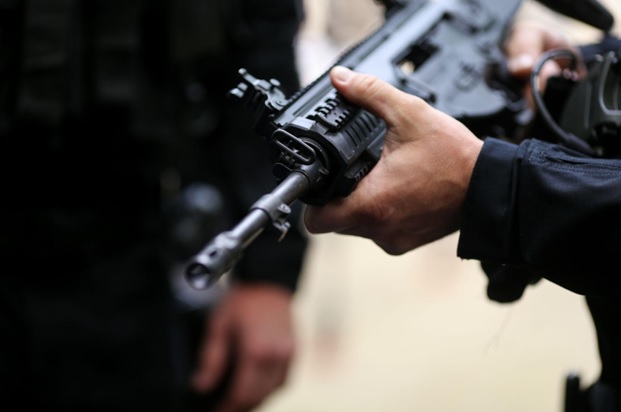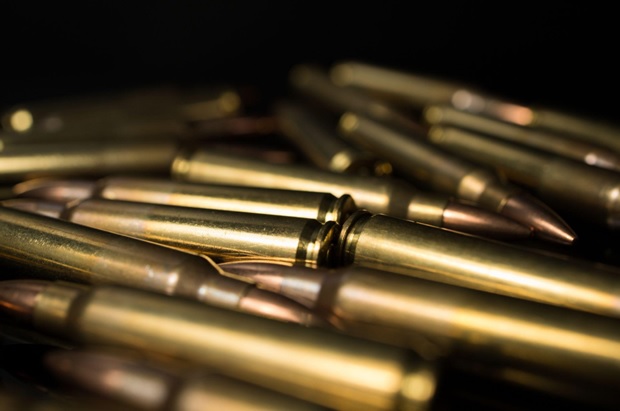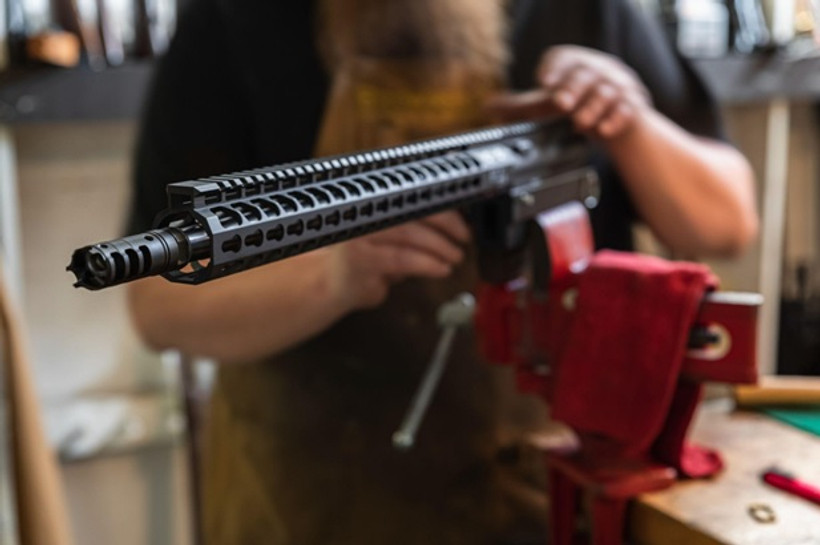Have you ever wanted to reap the benefits of .30 caliber shooting, predominantly being greater stopping power, in your AR-15 rifle?
You’re not alone. That’s why we have rifles like the AR-10, chambered in .308 Winchester.
But the AR-10 is heavier, larger, and less maneuverable than the AR-15. That’s a fairly big drawback when it comes down to handling, especially when used for sporting and defensive applications.
This is why we have cartridges like, well, specifically, why we have a cartridge known as .300 Blackout, also sometimes called .300 AAC Blackout.
It’s a cartridge developed specifically for the AR-15 that enables shooters to step up to a heavier .30-caliber cartridge without the added weight of a bigger rifle.
Here’s what you should know if you’re thinking about building a rifle with a .300 Blackout upper.
.300 Blackout vs .223 Remington Specifications and Ballistic Performance
The .300 BLK was developed to offer shooters performance similar to 7.62x39mm ammo, in basically the same footprint as a 5.56x45mm NATO cartridge.
Well, basically the same footprint. The only real difference in dimension between the 5.56x45mm NATO cartridge and a .300 AAC Blackout cartridge is in bullet diameter. The 5.56 (or .223 Rem) fires a .224” bullet whereas the .300 BLK cartridge is loaded with a .308” bullet - basically identical in caliber to .308 Winchester and 7.62x51mm NATO.
Both of these cartridges utilize the same brass, despite the fact that the bullets used with each are not the same. This makes it possible to use the same magazines and bolt carrier groups for each (see the note below on compatibility).
Since more .30 caliber cartridges are longer than most .22 caliber cartridges, the specifications of the .300 BLK had to be adjusted in order to accommodate the smaller casing.
Still, the .300 AAC Blackout offers superior close-range ballistic performance and power when compared to both the .223 Remington and 5.56.
The .300 Blackout is commonly loaded to both subsonic and supersonic specifications. Supersonic bullets usually range around 110 grains and can produce muzzle velocities around 2,200 and 2,300 FPS. Muzzle energies usually range from 1,370 to 1,400 ft-lbs.
Subsonic .300 BLK rounds usually weigh 200 grains or more and produce muzzle velocities around 1,000 to 1,050 FPS out of a 16” barrel. As for muzzle energy, it’s usually a lot lower; around 500 ft-lbs or so, not too far off from most .45 ACP loads.
As for .223 Remington (or 5.56), these cartridges are usually loaded with bullets that weigh between 55 and 75 grains, with 55 grain and 62 grain loads being particularly common.
As might be expected, these lighter bullets produce much higher muzzle velocities and comparably lower muzzle energies. Your average 55 grain .223/5.56 bullet will leave a 16” barrel at around 3,200 FPS, producing muzzle energy in the neighborhood of 1,200 to 1,300 ft-lbs.
Now, it should be mentioned that these figures are the products of many products themselves, including bullet weight, powder charge (and type) and barrel length. But it is also true that, across the board, the .223 is loaded with (much) lighter bullets, produces much higher muzzle velocities and generally lower muzzle energies.
Since the .300 BLK bullet is larger and heavier, it will produce about 50% more recoil than 5.56 - but this sounds a lot worse than it is. Since the .5.56/.223 produces so little recoil to begin with, a 50% increase is almost nothing.
So let’s take a look at how this translates to situations in which one might have the upper hand over the other. There are reasons for building rifles with both 5.56 and .300 Blackout uppers, and here they are.

Where the .300 Blackout Is Better
If you’re thinking about building a rifle with a .300 Blackout upper, there are two important things you need to keep in mind: ballistic performance and stopping power.
The .300 BLK has a terribly drooping trajectory, but it produces a lot of muzzle energy and delivers excellent stopping power within 100 yards.
The bullet drop of .300 BLK ammo can be in the area of 55 inches at 400 yards, which is several feet. It also loses a good deal of energy at this range, too.
So, it’s not a good choice for long-range shooting. But for engagements within a 100 yards, it delivers far superior energy and energy transfer than .223/5.56. This makes it better at close ranges for defensive applications as well as for hunting small to medium game, especially tough game like hogs.
Where the .223 Remington Is Better

We already know that .300 BLK produces superior muzzle energy, but that’s the main draw. Both .223 and 5.56 (which are basically the same round) have a much higher ballistic coefficient, making them both excellent choices for long-range shooting - at 500 yards or greater.
Like the .300 BLK, .223 and 5.56 can be excellent hunting cartridges, provided you use an appropriate bullet and target suitable game. The former cartridge is better for tougher game; .223 and 5.56 reign supreme for smaller game like varmints and predators such as foxes and coyotes.
Basically, go with .300 BLK if you need more power within 100 yards, and .223 for longer-range shooting.
Good News on Parts Compatibility
If you’re thinking about building a rifle with a .300 Blackout upper, you’ll be glad to know that all it requires is a barrel swap. AR-15 platforms chambered in either .223/5.56 or .300 Blackout use the same bolt carrier groups, magazines, and many other parts are interchangeable. You can even make and load .300 Blackout from necked-out and trimmed 5.56/.223 cases.
Start with a .300 Blackout Upper
Ready to start building a rifle with a .300 Blackout upper? We carry them here, along with barrels, muzzle devices, magazines, lower parts kits, and complete AR build kits, basically everything you need to complete your home build. Shop our selection and get in touch with us at Sales@MCSGearup.com if you have any questions.

